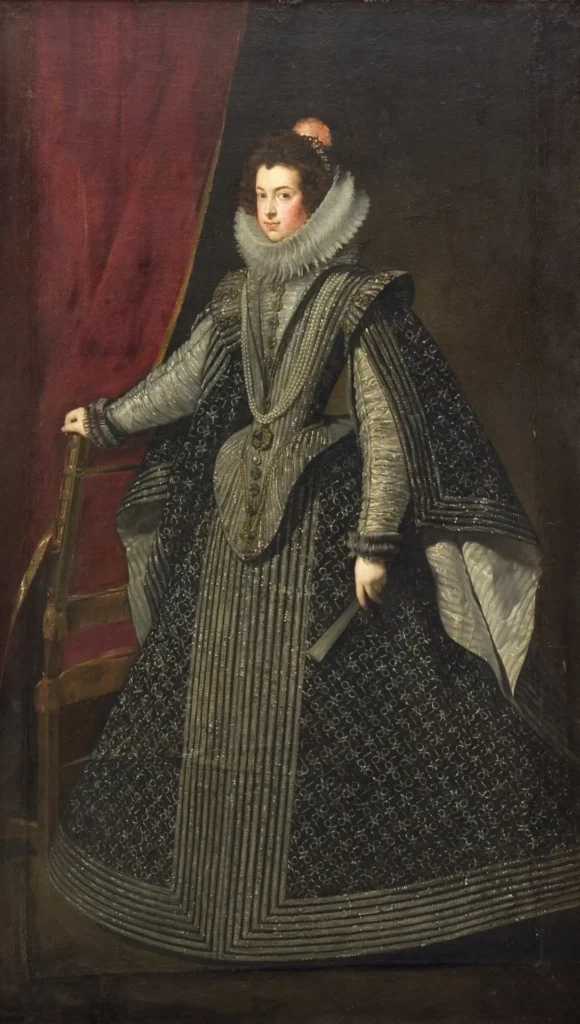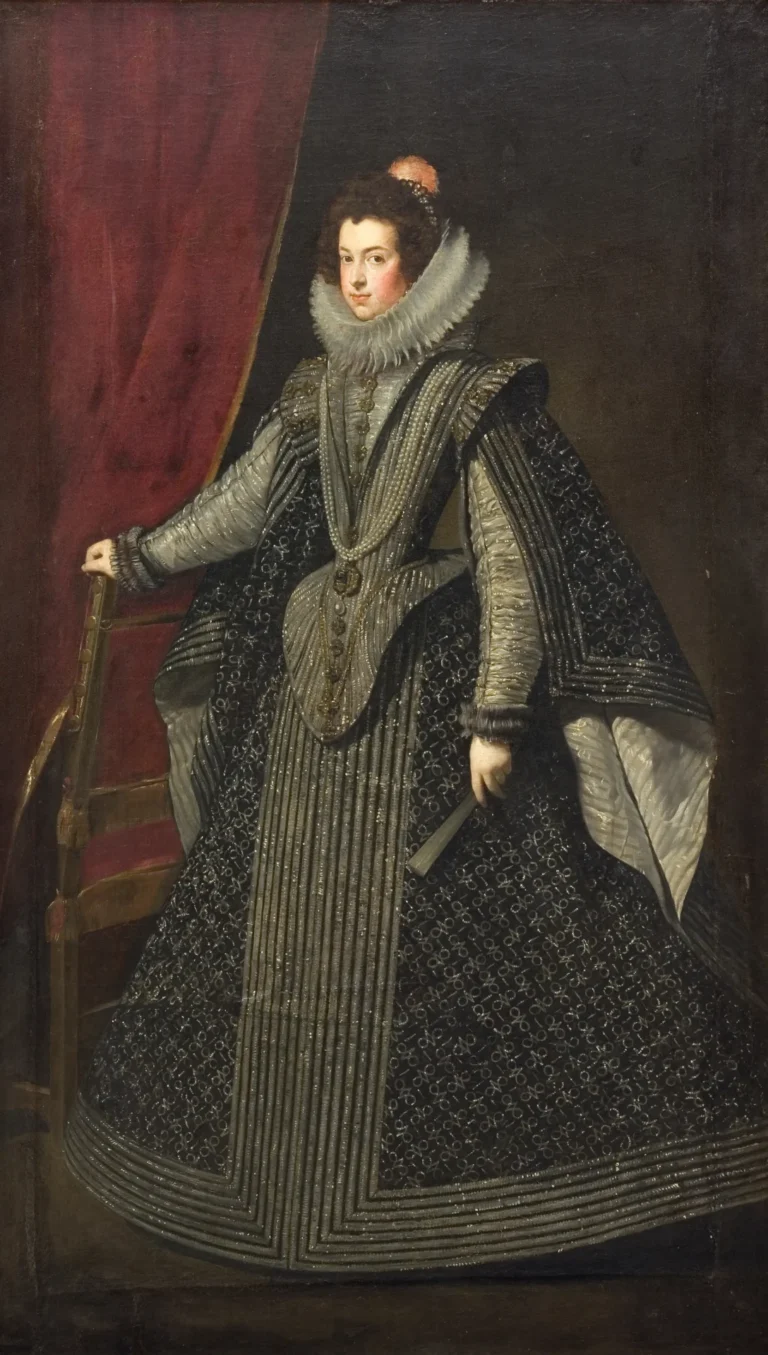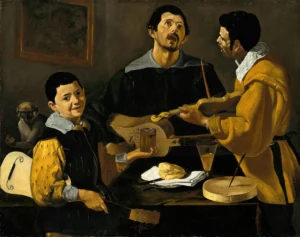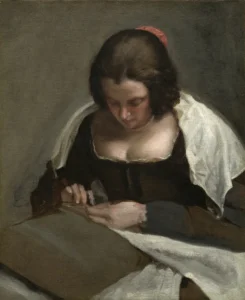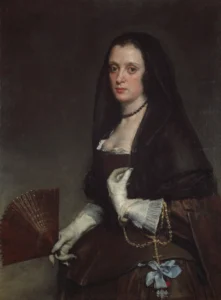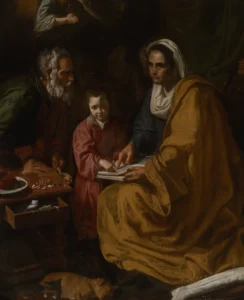Isabella of Bourbon. First Queen of King Philip IV (1613 - 1660)
Diego Velázquez's Isabella of Bourbon. First Queen of King Philip IV is a captivating full-length portrait exemplifying the artist's mastery of the Baroque style. Painted in the late 1620s and refined in 1631, it depicts Queen Isabella in a relaxed yet dignified stance, showcasing her elegance through Velázquez's exquisite detailing. The artwork not only reflects the royal grace but also highlights the evolving standards of portraiture during this period.
Late 1620s - 1631
About the Artwork
This artwork was created during Velázquez's mature period, a time when he had fully developed his artistic style. Queen Isabella was the daughter of King Henry IV of France and became the Spanish queen consort in 1615. The portrait, initially housed at the Buen Retiro palace, symbolizes the artistic exchanges in Europe at that time, especially after Velázquez's encounter with Peter Paul Rubens. Its journey through collection and sale after Napoleon's invasion contributes to its fascinating history, culminating in a planned auction with a remarkable valuation.
Did You Know
Liked what you see? Add it to your collection.
Enjoyed reading? Share it.
... continued
Artist and Period
The painting is attributed to the Spanish artist Diego Velázquez, who was active from 1599 to 1660. This work is from his mature period, reflecting his mastery of the Baroque style.
Subject
The subject of the painting is Isabella of Bourbon, who was the wife of King Philip IV of Spain. She was the daughter of French monarch King Henry IV and married Philip IV in 1615, becoming the Queen consort of Spain from 1621 until her death in 1644.
Composition and Style
The painting is a full-length portrait that depicts Queen Isabella in a more relaxed and natural pose, breaking away from the traditional formal royal portraits. Velázquez's use of light and shadow, as well as his meticulous attention to detail on the queen's dress, veil, and lace collar, are notable aspects of the work. The painting showcases Velázquez's technical mastery and his ability to capture the queen's confidence and power.
History
The painting was initially created in the late 1620s but was revisited by Velázquez in 1631, after he met Peter Paul Rubens. It was originally displayed at the Buen Retiro palace in Madrid, paired with Velázquez's 'Philip IV in Black.' During Napoleon's invasion of Spain in 1808, the painting was taken to France and later sold to various collectors. It has been in private collections since, with its current owners acquiring it in 1978. The painting is set to be auctioned at Sotheby's in February 2024, with an estimated value of $35 million.
Medium and Dimensions
The painting is an oil on canvas work, measuring 126.4 × 101.6 cm (49 3/4 × 40 in.), although dimensions might slightly vary depending on the specific version or source. This painting is a testament to Velázquez's skill and his significant contribution to the visual art of the 17th century.




